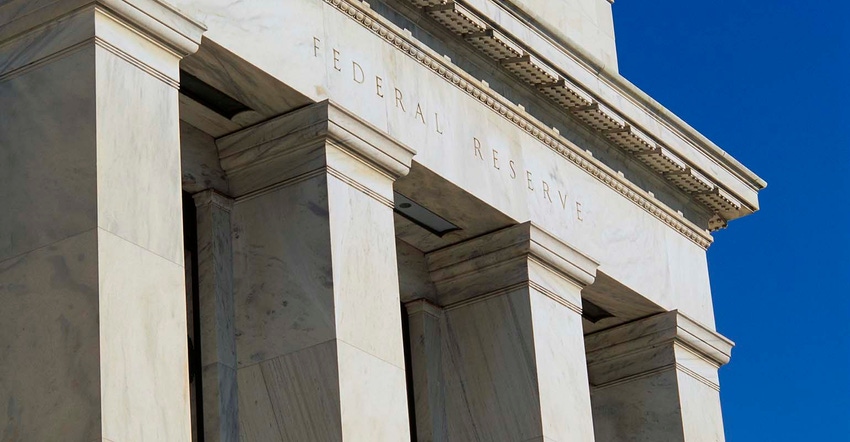
Soaring farmland values have stolen the spotlight in ag headlines for what seems like forever. But based on recent survey results shared by Federal Reserve Banks, that might not be the case for long.
Four Federal Reserve Banks released second quarter updates last week regarding farm income, farmland values and agricultural credit conditions. Despite climbing interest rates and high input costs, the farm economy remains strong across the board – for now.
Increasing farm loan interest rates, drought, higher input costs, and commodity price pullbacks have eluded to slower growth in the farm economy in coming months.
Farmland values
Following sharp gains in farm values in recent quarters, valuations began leveling out in the second quarter alongside recent declines in agricultural commodity prices.
The Federal Reserve Bank of Chicago reports a 22% rise in Midwest farmland values in the second quarter of 2022 compared to one year ago. Indiana and Iowa exhibited the largest year-over-year gains in agricultural land values.
“Good” Midwest farmland values increased 2% in the second quarter of 2022 relative to the first quarter. This was the smallest quarterly gain in farmland values since the third quarter of 2020, signaling change on the horizon. The slower increase in land valuations follows the uptick in farm loan interest rates.
However, several survey respondents say buyers from outside of agriculture continue to push farmland values higher, indicating demand for land remains healthy.
Cash rent increases also show signs of slowing. Cash rents on all types of farmland in the Midwest and Plains increased by about 15%-20% from a year ago during the second quarter. Rents increased by an average of about 1% from the previous quarter, marking the slowest increase since early 2021.
Looking ahead to the third quarter of 2022, only 25% of survey respondents in the Midwest expect farmland values to rise, while 71% anticipate current values holding steady.
Ag prices hold strong
Agricultural prices rose year-over-year in quarter two, maintaining the upward trajectory that began in the summer of 2020. USDA’s June index of prices increased 26% from a year ago and 53% from two years ago. June corn and soybeans were up 23% and 13% respectively from a year ago.
Tight stocks, Ukraine export uncertainty, and weather concerns continue to support corn and soybean prices. Projected revenues for the 2022 harvest using USDA data relative to revenues from 2021 suggest a 7.3% increase for corn and 10% increase for soybeans.
Prices paid by farmers increased substantially from a year ago as well (13% overall for commodities and services, interest, taxes, and wage rates, based on USDA data). Most notably, fertilizer and diesel prices were up dramatically from a year earlier.
While the outlook for the agricultural sector in 2022 has remained positive, lenders report growing concerns about 2023.
For more information, view the full reports:
Federal Reserve Bank of Chicago
Federal Reserve Bank of Minneapolis
Federal Reserve Bank of Kansas City
Federal Reserve Bank of Dallas
About the Author(s)
You May Also Like






